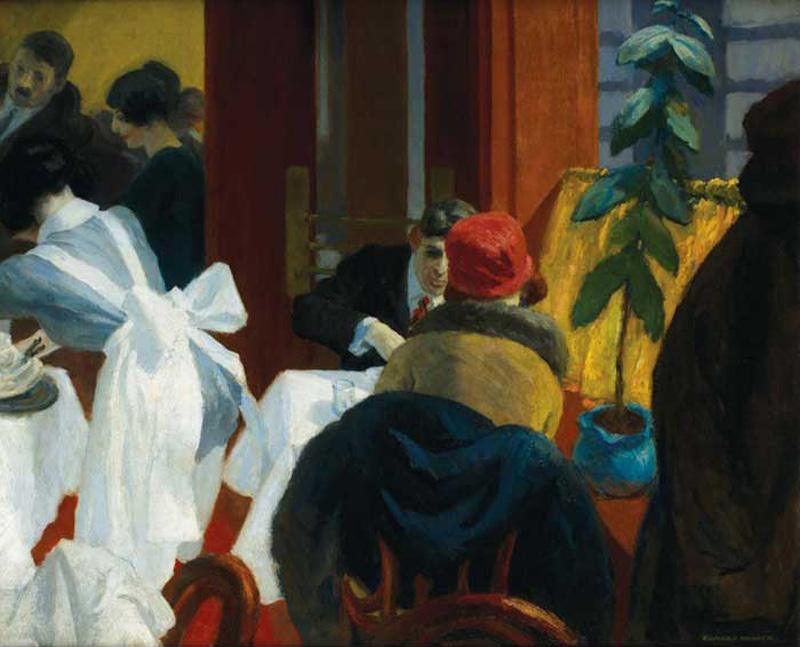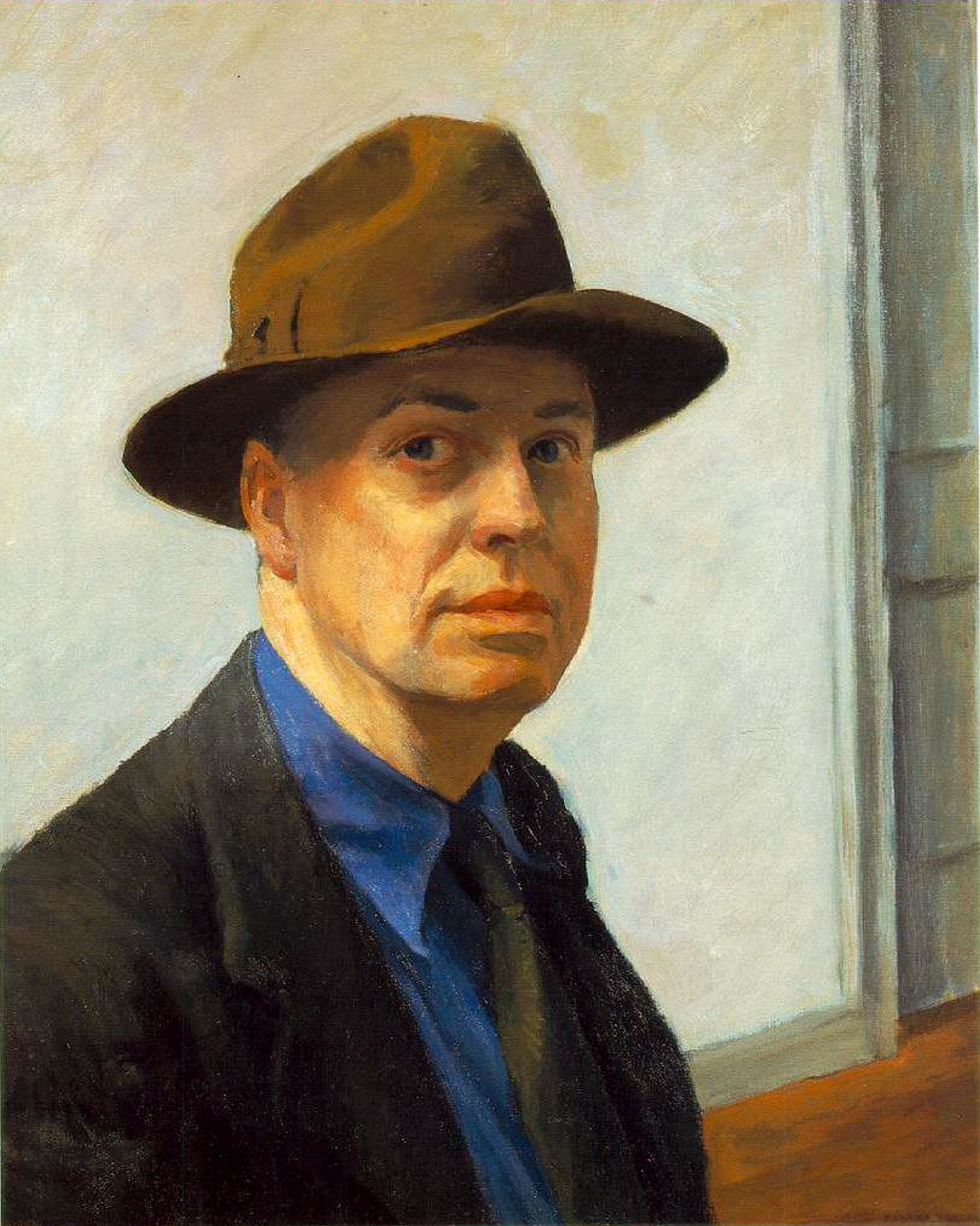Edward Hopper studied under Robert Henri and Kenneth Hayes Miller at the New York School of Art from 1900 to 1906 and also had some contact with William Merritt Chase. He made three trips to Europe, but did not enroll for formal study. Hopper was included in the 1913 Armory Show but after the exhibit he abandoned painting for the next decade, making a living as a commercial artist and refining his art through etchings and watercolors. In the early 1920s a watercolor, The Mansard Roof, was exhibited and purchased by the Brooklyn Art Museum. It laid out what would become the hallmarks of Hopper’s work: a precise sense of location; clear, harsh light; strong geometric elements; and a sense of loneliness and melancholy. His subtle observations of American life made Hopper a pivotal figure in the development of American art. New York Restaurant comes out of Hopper’s early career. While the scene is crowded, the woman in the red hat seems removed and distant, uninvolved with the man who sits with her. Hopper spoke of this painting in a letter to the MMA dated January 9, 1937: "The picture New York Restaurant was painted about 1922 – not later at any rate. In a specific and concrete sense, the idea was to attempt to make visual the crowded glamour of a New York restaurant during the noon hour. I am hoping that ideas less easy to define have, perhaps, crept in also.”




New York Restaurant
oil on canvas • 61 × 76.2 cm
 Edward Hopper
Edward Hopper